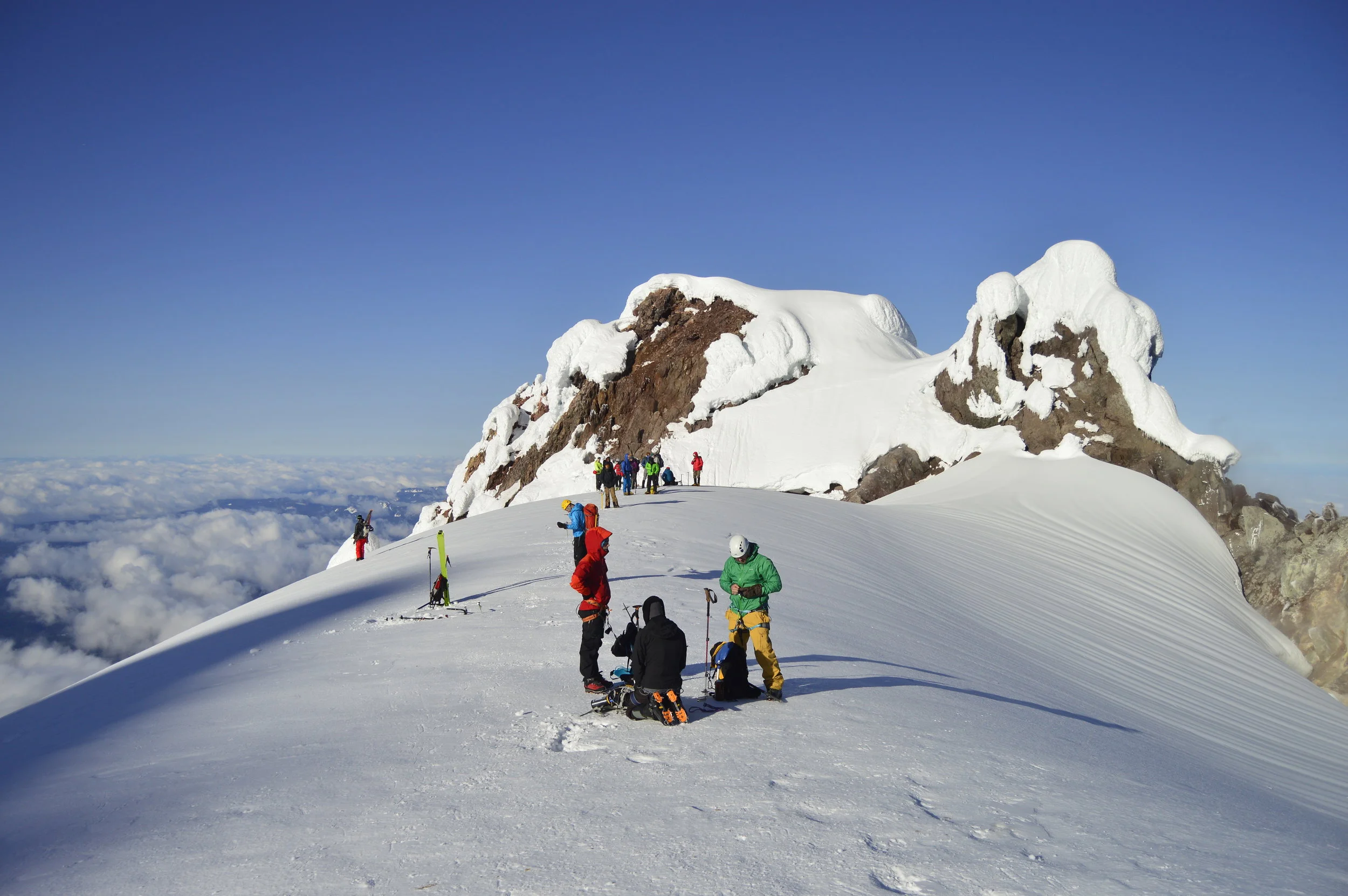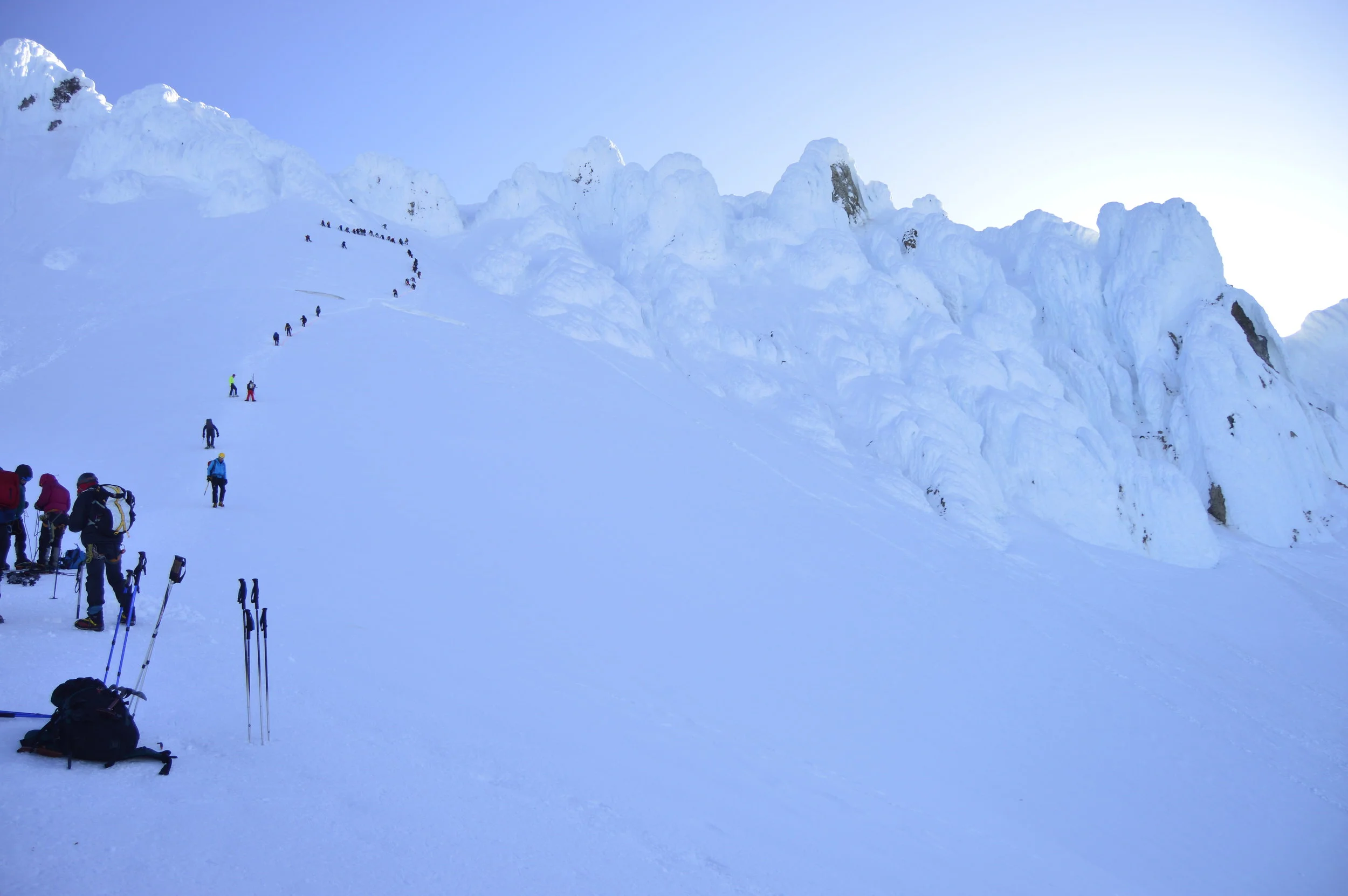My Failed Attempt(s) at Climbing Mt. Hood
After graduating from a mountaineering program, I was excited to apply my new skills on a technical climb. I had my sight set on summiting Mt. Hood, a prominent and iconic mountain in the Pacific Northwest. Mt. Hood is referred to as the second most frequently climbed glaciated mountain in the world (behind Mt. Fuji) and it stands at approximately 11,250'. To me and other newbie climbers, it’s impressive.
A technical climb meant getting a full day's sleep in order to get an early alpine start for ideal conditions. It also meant being extremely meticulous with what I packed and how I packed it. No good comes from packing crampons at the bottom of the pack, next to that cozy puffy jacket and hydration pack. It also meant remembering to get energy gels to replace coffee and candied gingers to ward off potential nausea caused by the smell of sulfur spewing from the fumaroles near the top.
Each time I packed my bag and altered my sleep schedule (six times to be exact) in anticipation of summiting Hood, I was greeted with unfavorable conditions—high avalanche danger, dangerous wind gusts, or an unpredictable snow storm. On the bright side, it gave me plenty of opportunities to practice packing and re-packing efficiently and effectively.
Finally, there was a last-minute window when conditions were ideal and my leaders had the day off. It was predicted to be a sunny Saturday with favorable conditions. Our group quickly regrouped; aiming at summiting that Saturday morning. I was thrilled! We carpooled to the Wy'East Day Lodge at the base of Mt. Hood around 1 am to get an alpine start. We approached the South Side; a straightforward and common route up the mountain.
The wind conditions were unusual that day: it wasn't necessarily windy, but the smell of sulfur spewing out of the fumaroles wafted all the way down to the parking lot. The smell of sulfur is typically experienced near Devil's Kitchen; a flat plateau just below the final ascent. It's also home to a very large and visible fumarole that causes many climbers to feel ill due to the fumes—but it's often mistaken with altitude sickness. I had fortunately brought my candied gingers for this very reason.
Once we were geared up and accounted for, we all made a steady ascent, stopping a few times to adjust layers, hydrate, snack, catch our breaths, and of course admire the views. Once we reached the top of Palmer, a ski-area, nearly half of our group had to turn-around due to feeling ill. It was down to six of us, including two leaders.
We continued making a steady pace, creating our own switch-backs. Alone with my thoughts, I remember thinking to myself why I am doing this... My fingers and toes were painfully cold, I was hungry but couldn't stomach another cliff bar or anything else for that matter, my quads hurt, and oh dear god nausea was creeping up on me. My individually wrapped candied gingers relieved my nausea, but only temporarily. Plus, I had to call it quits on the candies once I realized it was a fruitless effort unwrapping each candy with cold fingers and bulky gloves. I had to force myself to redirect my attention—counting each step.
We made it the top of Devil's Kitchen. We took a break to add layers and go over our plan for summiting the final more technical section through the Pearly Gates—a steep icy stretch leading directly to the summit.
I was struggling to stay warm and keep my food down, I was anxious to start moving again whether it was ascending or descending, I didn't care. Our leaders were deciding on whether our team was going to rope up or not, given that the bergschrund had just opened up moments ago. They also noticed the conga line of climbers moving at glacial speed—before to global warming. We shouldn't have been surprised given Mt. Hood's popularity and the fact that it was a beautiful sunny Saturday.
Our leaders figured that the speed of which it would take to ascend those last 800' or so would take us nearly two hours. While our leaders continued to deliberate, three of us were feeling queasier by the minute and getting irritable from the cold. It made no sense to push our limits further. We needed our hands to be functional while using our second ice tool to safely climb through the Pearly Gates along with the concentration to do so. With a line that long and a glimpse of unprepared climbers awkwardly making their way up, we unanimously called it quits. It wasn't worth the possibility of something going wrong and creating a domino effect.
We retraced our steps making it back to the parking lot where the remainder of our team were waiting to congratulate us on our first technical summit. We solemnly broke the news to them that it was a failed attempt. Looking back at it now, I know our leaders and our group collectively made the right call. It was about an hour or so after we made it back to the parking lot that we received word that someone fell while climbing the Pearly Gates. Sadly, that person later died from complications. It doesn't matter how "easy" a climb is considered, unfortunately things like this do happen, especially when people are unprepared. For us seeing a congested line of climbers was one of the main reasons for turning around. One person slipping and unable to self-arrest could have been disastrous for the people below. While that didn't happen to my knowledge, I'll never take for granted how vulnerable we all are when climbing and the unforeseen risks that may occur—no matter our experience levels or confidence.
Even though Mt. Hood is one of the most commonly climbed mountains in the world, dangers do exist and it takes courage to be humble and not push the boundaries beyond reason. It was and is discouraging knowing that so many people have summited Mt. Hood, especially when we were so close to the top. Someday I'll summit, but until then our failed attempt taught me a lot about climbing: put aside my ego, trust my intuition, and continue to gain skills that will make me a safer and better climber.





